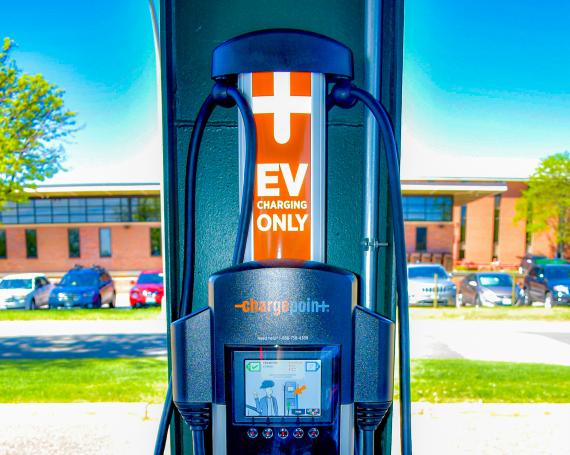Charging Ahead


President Biden has made outfitting the federal government fleet with electric vehicles one of his administration’s top priorities after issuing an Executive Order (EO) in late January.
Electric vehicles are clean and zero-emission, which helps the environment, but they require an infrastructure of charging stations that can keep those cars operational.
The Denver Federal Center (DFC) is already poised to support that effort because there are currently 11 electric vehicle charging stations installed around the campus.
All 11 changing stations were installed back in 2012 using funding provided by the American Recovery and Reinvestment Act. Originally, they could only be used by federal entities because an executive order prevented the government from recuperating funds from the public.
That was until new legislation was signed into law by then-President Obama in 2015, called the Fixing America’s Surface Transportation Act, which provided a mechanism to collect funds from sources other than the government.
“It’s really very easy,” said Christie-Anne Edie, Sustainability Specialist for Region 8. “Users need to first establish an account, scan the provided membership card at any of the stations and charge!”

Charging stations on the DFC are considered to be level 2, which use a higher output 240-volt power source that can charge electric vehicle batteries in about 3 hours. All charging stations have dual ports, which means two cars can charge off of one machine. In a standard workday, 44 cars can be charged up and ready to go.
The locations for the charging stations on the DFC are:
- Building 810 (four stations)
- Building 25 (four stations)
- Building 20 (two stations)
- Building 53 (one station)
For more information about GSA charging stations, go to the website.
Read more of the Region 8 “We Are Green” series:
- Part 1: Renewable Energy Not New to Region 8
- Part 2: GSA Region 8 Finds Creative Solution to Pest Problem
- Part 3: Charging Ahead
- Part 4: Not Blinded by the Light
- Part 5:

 U.S. General Services Administration
U.S. General Services Administration